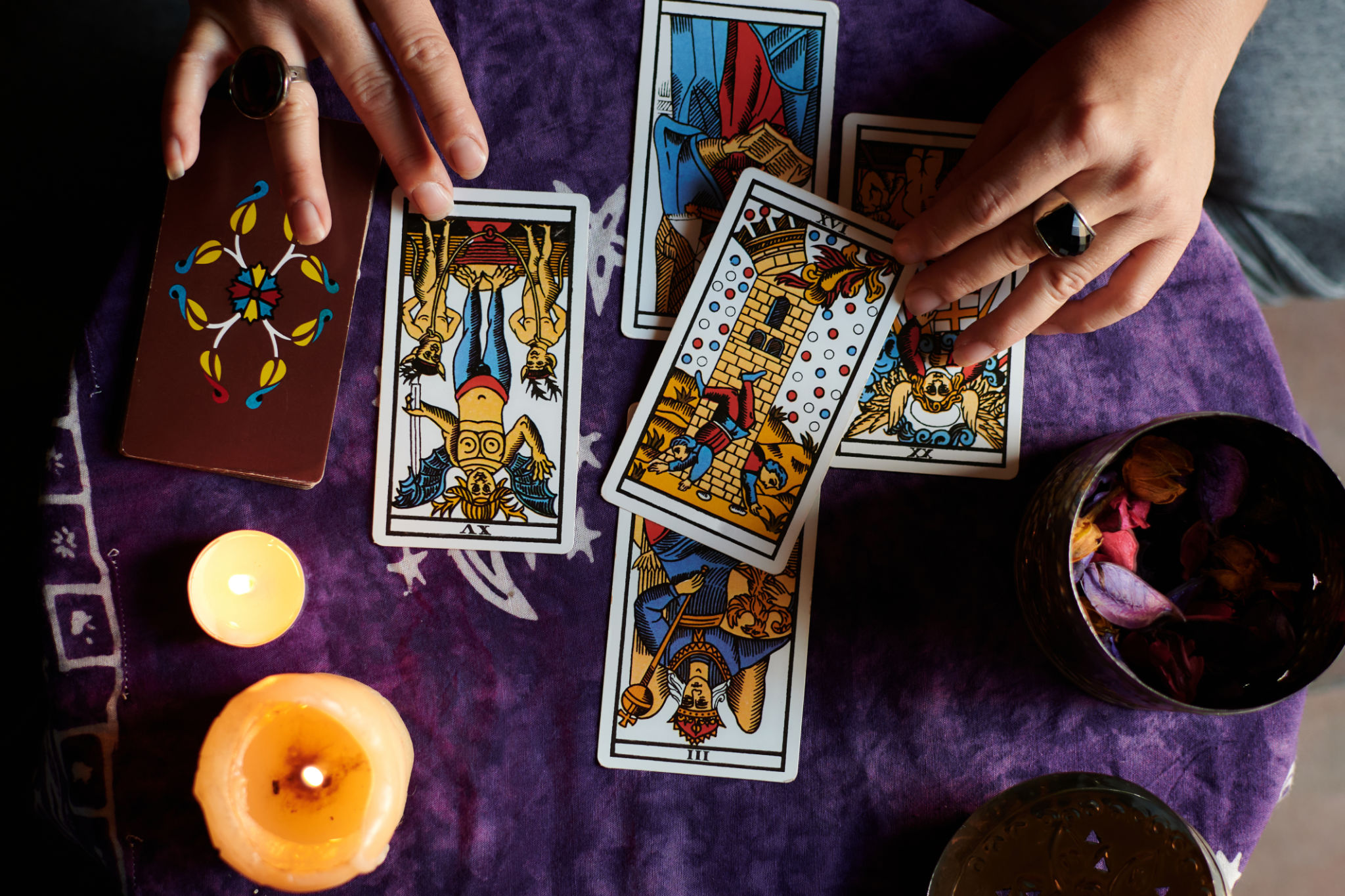Debunking Common Myths About Tarot: What You Need to Know
Understanding Tarot: Beyond the Myths
Tarot cards have long been shrouded in mystery and intrigue, often misunderstood by those who haven't delved into their rich history and purpose. Many people associate tarot with fortune-telling or mysticism, but the reality is far more nuanced. Here, we aim to debunk some common myths about tarot and shed light on what these cards truly represent.

Myth 1: Tarot is Only for Fortune-Telling
One of the most pervasive myths about tarot is that it is solely a tool for predicting the future. While tarot can offer insights into potential outcomes, its primary purpose is not fortune-telling. Rather, tarot serves as a guide for introspection and self-reflection. Each card holds symbolic meaning that can help individuals explore their emotions, thoughts, and life situations more deeply.
Tarot readings encourage individuals to consider different perspectives and possibilities, offering a framework for personal growth and decision-making. The cards are not meant to dictate one's future but to illuminate paths that might otherwise remain hidden.
Myth 2: Only Psychics Can Read Tarot
Another common misconception is that only those with psychic abilities can read tarot cards effectively. In truth, anyone can learn to read tarot with practice and dedication. Understanding the meanings of the cards and developing intuitive skills are key components of becoming proficient in tarot reading.

Many people begin their tarot journey through books, workshops, or online resources. With time and practice, they develop their unique interpretative style, allowing them to provide insightful readings for themselves and others. It's a skill that can be honed by anyone willing to put in the effort.
Myth 3: Tarot Cards Are Evil or Dangerous
There is a persistent belief that tarot cards are linked to dark forces or that they can bring negative energy into one's life. This myth likely stems from historical associations with occult practices. However, tarot cards are simply tools made of paper and ink. Their power lies in how they are used and interpreted by the reader.
Approaching tarot with a clear intention and an open mind ensures that readings are beneficial and enlightening rather than harmful. It's important to remember that tarot is a tool for self-exploration, not a source of malevolence.

Myth 4: Tarot Readings Are Always Accurate
Some people expect tarot readings to provide definitive answers or predict events with absolute certainty. However, tarot is not an exact science, and its accuracy depends on various factors, including the reader's skill and the questions asked. Tarot offers guidance based on current energies and circumstances, which can change over time.
The value of a tarot reading lies in its ability to offer new perspectives and insights rather than concrete predictions. Users should approach readings with an open mind and a willingness to engage with the messages presented by the cards.
Embracing Tarot as a Tool for Insight
By dispelling these myths, we can appreciate tarot for what it truly is—a powerful tool for self-discovery and personal development. Whether you're a seasoned reader or new to the world of tarot, understanding its true purpose can enhance your experience and deepen your connection with the cards.
Embrace tarot as a means of gaining clarity and insight into your life's journey. By doing so, you'll unlock its full potential as a valuable companion on your path to understanding yourself and the world around you.